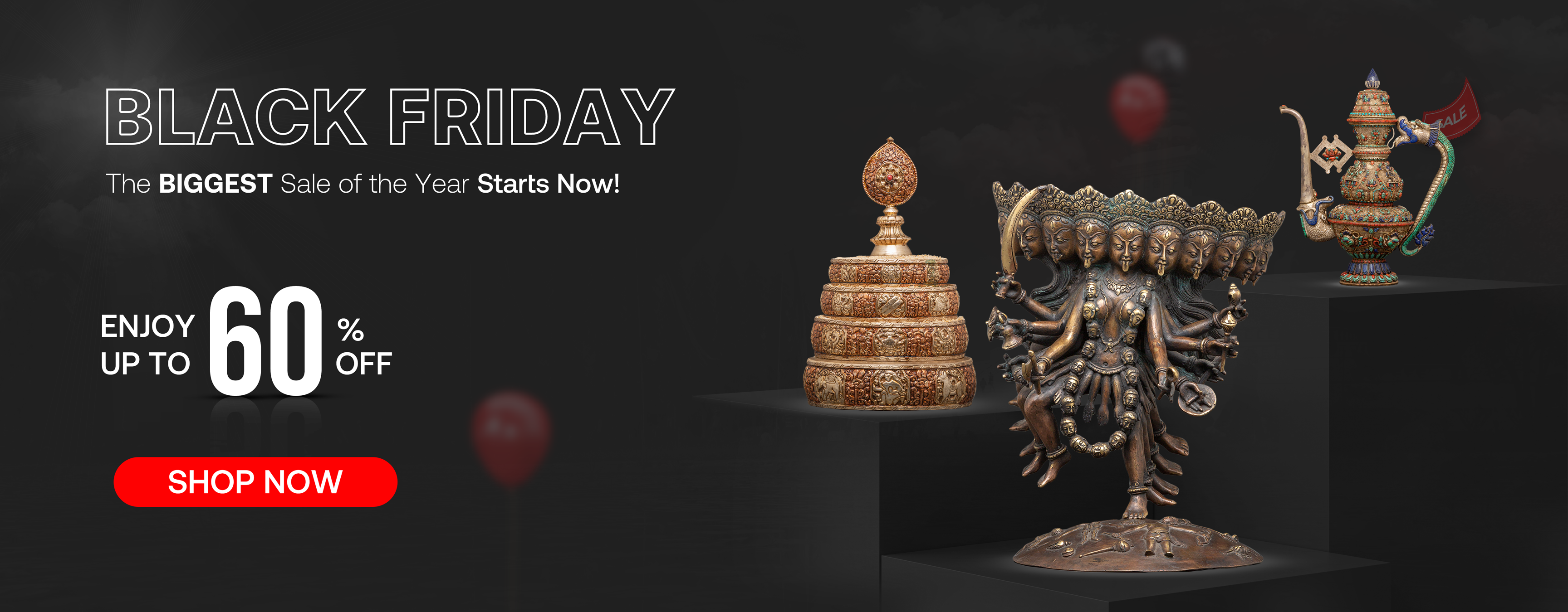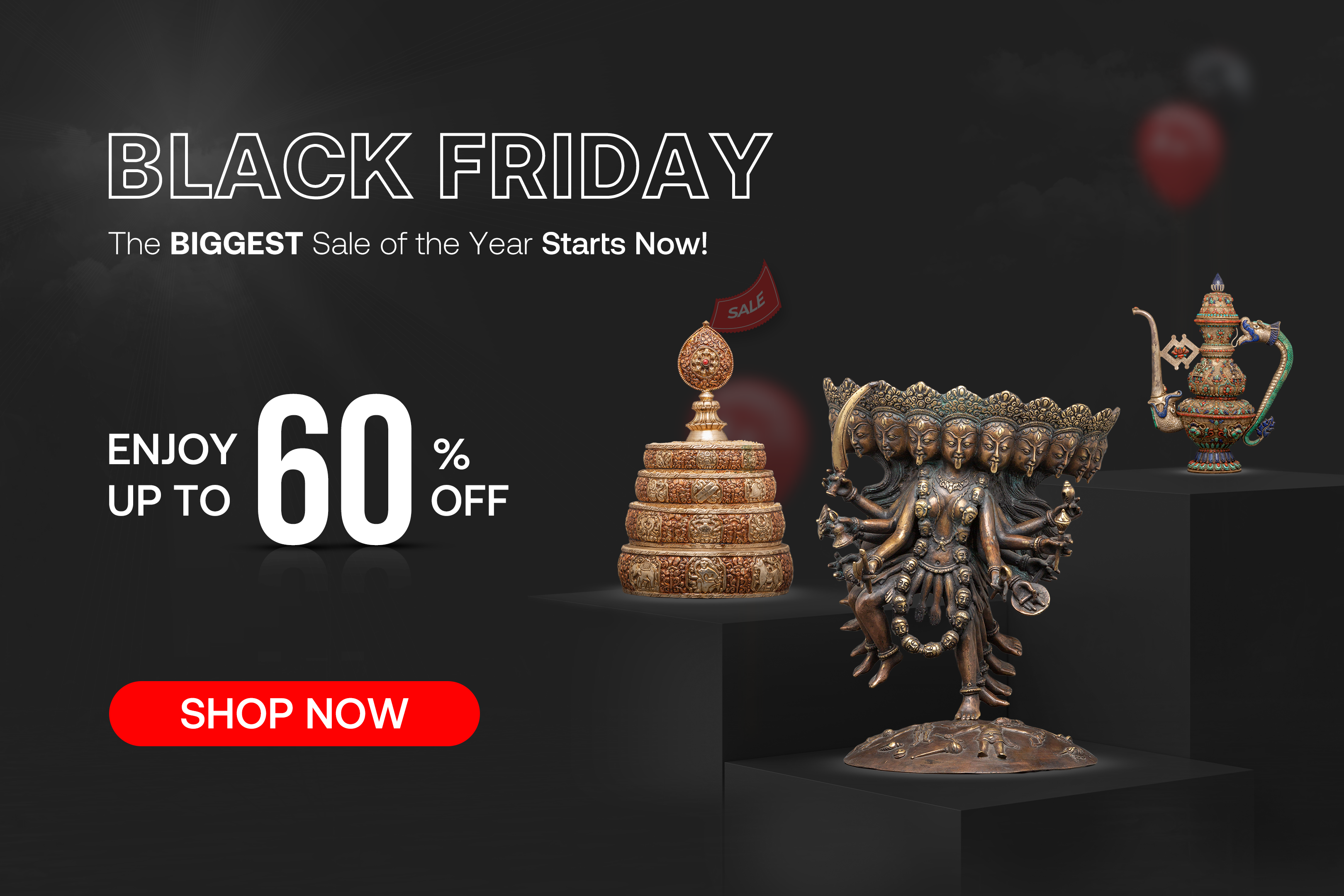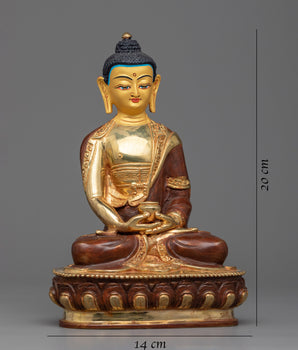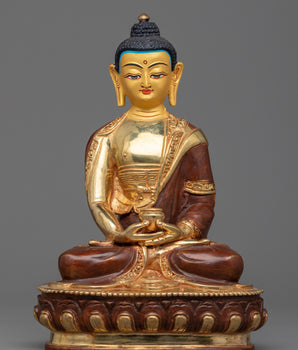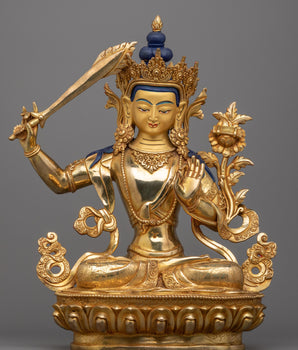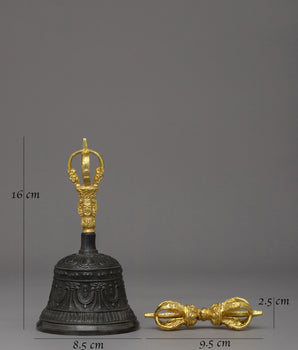For many new members of the Buddhist community, encountering the rich scent of incense is often one of the first sensory experiences in a shrine room or meditation space. Tibetan Buddhism, in particular, places deep spiritual and ritual significance on incense offerings. This beginner-friendly guide explores what actually goes inside a Buddhist incense burner—from the sacred herbs used to the materials in the burner itself—and how to set up your own incense practice with respect and awareness.
The Spiritual Role of Incense in Tibetan Buddhism
A Bridge Between the Physical and Spiritual
Incense represents transformation—solid ingredients turned into sacred smoke. This smoke is offered to the Three Jewels (Buddha, Dharma, Sangha), Bodhisattvas, Dharma Protectors, and unseen beings. It clears negativity, creates conducive conditions for meditation, and supports the cultivation of awareness and devotion.
An incense burner is a ritual tool that protects, holds, and enhances the offering. It symbolizes the vessel of mind and is often placed at the center of personal or temple shrines.
What Goes Inside a Buddhist Incense Burner?
1. Juniper (Juniperus indica)
-
Region Found: Himalayas – Nepal, Tibet, Bhutan
-
Use in Practice: Used to purify the space, clear negative energies, and protect against unseen obstacles.
-
Cultural Note: Often burned at the beginning of rituals; juniper smoke is believed to drive away harmful spirits and disturbances.
2. Sandalwood (Santalum album)
-
Region Found: India (especially Mysore), Nepal
-
Use in Practice: Calms the mind and deepens concentration.
-
Spiritual Meaning: Invokes peace, compassion, and clarity—ideal during meditation or mantra recitation.
-
Cultural Note: Considered a sacred wood across many traditions, including Mahayana and Vajrayana.
3. Frankincense (Boswellia sacra)
-
Region Found: Arabia, Northern Africa, India (imported into Tibetan trade routes)
-
Use in Practice: Transcendent fragrance used in offerings to higher beings.
-
Spiritual Meaning: Elevates prayers and deepens ritual presence.
4. Myrrh (Commiphora myrrha)
-
Region Found: East Africa, Arabian Peninsula
-
Use in Practice: Grounding and sacred; used for devotion and stabilizing energy.
-
Spiritual Meaning: Represents letting go and internal transformation.
5. Snow Lotus (Saussurea laniceps)
-
Region Found: Tibetan Plateau, high altitudes over 4000m
-
Use in Practice: Rare and potent, included in incense for healing and sacred offerings.
-
Spiritual Meaning: Symbolizes purity, enlightenment, and elevated consciousness.
6. Rhodiola (Rhodiola rosea)
-
Region Found: High Himalayan regions of Tibet, Nepal
-
Use in Practice: Supports focus, resilience, and balanced energy.
-
Spiritual Meaning: Enhances vitality and spiritual strength, especially during retreats.
7. Saffron (Crocus sativus)
-
Region Found: Kashmir, Iran, and parts of Tibet
-
Use in Practice: Adds fragrance, sacredness, and richness to incense.
-
Spiritual Meaning: Represents abundance, purity, and divine elegance.
8. Cedarwood (Cedrus deodara)
-
Region Found: Western Himalayas – India, Nepal
-
Use in Practice: Used in cleansing rituals and protective prayers.
-
Spiritual Meaning: Offers grounding and stabilizing energy to the space.
9. Valerian (Valeriana jatamansi)
-
Region Found: Central and Eastern Himalayas
-
Use in Practice: Used for calming emotional turbulence and inducing peace.
-
Spiritual Meaning: Aids tranquility, useful during deep meditation or evening practices.
10. Camphor (Cinnamomum camphora)
-
Region Found: East Asia, especially China
-
Use in Practice: Used to open energy channels, awaken clarity.
-
Spiritual Meaning: Clears mental fog and revitalizes intention.
11. Nag Champa (Michelia champaca flower)
-
Region Found: Southern Himalayas, Nepal, India
-
Use in Practice: Sweet fragrance promotes peace and gentle joy.
-
Spiritual Meaning: Symbolic of inner beauty and devotion.
12. Agarwood (Aquilaria agallocha)
-
Region Found: Assam (India), Bhutan, parts of Southeast Asia
-
Use in Practice: One of the most precious incense ingredients in Buddhism.
-
Spiritual Meaning: Deepens inner connection, used in high tantric rituals.

Type of Himalayan Incense
Stick Incense (Coreless Herbal Sticks)
These thick incense sticks are made entirely of ground herbs and natural resins with no inner bamboo stick, unlike many commercial versions. They burn slowly and evenly.
-
Uses: Daily practice, meditation, offerings to Buddhas and Bodhisattvas.
-
Best Burner: Horizontal tray or ash-filled bowl.
-
Symbolism: Simplicity, devotion, and harmony.
Rope Incense (Twisted Paper Incense)
This traditional format features ground herbs wrapped in handmade rice or Lokta paper and twisted into rope shapes.
-
Uses: Ceremonial practices, temple rituals, purification rites.
-
Best Burner: Laid flat on ash or sand bed in a bowl.
-
Symbolism: Offering to unseen beings and protectors.
Powdered Incense (Loose Herbs & Resins)
Made from finely ground herbs, woods, and resins, powdered incense is typically sprinkled onto hot charcoal or heated in specialized bowls.
-
Uses: Large offerings, tantric ceremonies, high-intensity rituals.
-
Best Burner: Hanging censer or bowl with charcoal.
-
Symbolism: Transformation and impermanence.
Cone and Dhoop Forms
These compact incense types are less traditional but increasingly used in homes for their convenience and strong aroma.
-
Uses: Quick personal offerings, apartment shrines.
-
Best Burner: Heat-safe trays or domed holders.
-
Symbolism: Instant clarity and elevation.
Choosing the Right Incense Burner Based on Incense Type
| Incense Format | Burner Style | What to Check |
|---|---|---|
| Stick | Box/tray or shallow bowl | Width fits stick, ash tray present |
| Rope | Ash‑filled bowl or flat tray | Surface stable, sand/ash base okay |
| Powder / Resin | Hanging censer or deep charcoal bowl | Heat resistant, ventilation, charcoal compatible |
| Cone/Dhoop | Flat tray or small ash catcher plate | Quick burn safe, minimal space, easy cleanup |
| Ritual/Medicinal Blend | Ceremonial metal bowl or high‑quality tray | Strong build, safe for rare herbs, worthy of blend |
Top 3 Evamratna Burners by Use‑Case
1. Stick Incense Burner – “Incense Burner Stick Holder”
-
Product: “Incense Burner Stick Holder” — copper, silver‑plated, designed to hold herb sticks for daily offerings.
-
Best matched incense: Coreless herbal sticks (e.g., sandalwood or juniper blends).
-
Why it works: The holder allows the stick to lie horizontally or slightly angled, safely containing ash and allowing steady burn.
-
Usage tip: Place on a clean altar, insert one stick each offering ceremony, and let aroma rise peacefully.
2. Powder/Resin Burner – “Tibetan Hanging Incense Burner (Copper with Turquoise & Coral)”
-
Product: Hanging censer sized 42.5 cm height × 14 cm base, copper body with turquoise & coral inlay.
-
Best matched incense: Loose herbal powders or resin blends (e.g., snow‑lotus, frankincense, myrrh).
-
Why it works: The hanging design allows better airflow and even burn of charcoal‑based powders. Ideal for ritual use.
-
Usage tip: Use charcoal disc in base, place powder/resin on heat bed, hang or place stable to circulate smoke & intention.

3. Rope/General Burner – Metal or Wood Bowl/Tray from Collection
-
Product: Multiple options from the collection: wood, copper, gold‑plated bowls/trays.
-
Best matched incense: Rope incense (twisted herbal paper) or everyday blends.
-
Why it works: A flat tray or sand‑filled bowl is appropriate for rope format—lets it burn slowly, safely, and mindfully.
-
Usage tip: Fill bowl with fine sand or ash, lay the rope incense horizontally, light one end, and meditate on the smoke as offering.

The right incense and burner are more than accessories—they're part of your practice. Whether you use rope incense in a clay bowl or powdered incense in a brass censer, each choice reflects your intention and respect for the tradition. With this guide, may your offerings rise like smoke—pure, purposeful, and full of merit.
🕊️ Ready to begin? Explore the curated Evamratna Incense Burner Collection for tools that support your path.







